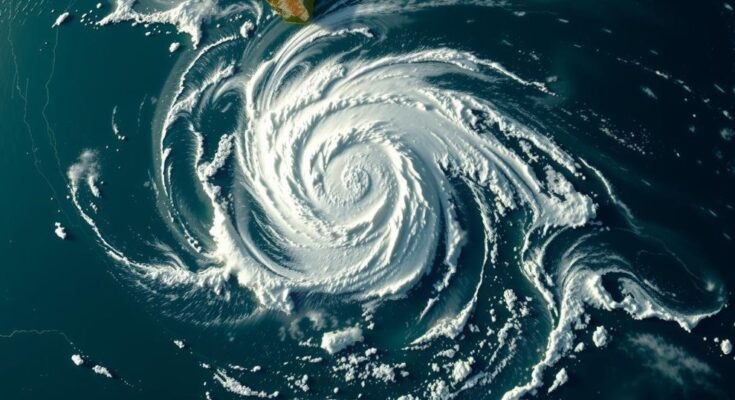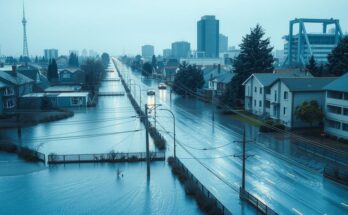Hurricane Rafael hit Cuba as a Category 3 storm, causing power outages, home collapses, and widespread evacuations. By Friday, it had weakened to Category 2 while continuing to swirl over the Gulf of Mexico, with recovery efforts underway in Cuba but many still affected by the storm’s destruction.
Hurricane Rafael made landfall in Cuba as a formidable Category 3 storm, causing widespread devastation on Wednesday. The hurricane knocked out the nation’s power grid and resulted in the evacuation of 283,000 individuals, with reports confirming the collapse of 461 homes. On Thursday, residents in areas such as Alquizar began recovering belongings from damaged homes, confronting the aftermath of severe winds and flooding. As of Friday, Rafael had weakened to a Category 2 storm and was located over the Gulf of Mexico, approximately 230 miles from Progreso, Mexico, with winds reaching 110 mph. The National Hurricane Center in Miami reported that Rafael was moving northwest at 9 mph. Though hurricane warnings were not immediately issued, forecasters cautioned about the potential for dangerous surf and rip current conditions along the Gulf coast. Previously, the storm had traversed Jamaica and the Cayman Islands, instigating power outages and mudslides before impacting Cuba with devastating results. The Cuban government succeeded in restoring power to about 143,000 homes in Havana by Friday, although many remained without electricity due to ongoing repercussions from the hurricane. This recent event follows a period of challenges for Cuba, which had endured severe blackouts attributed to an energy crisis prior to the arrival of Rafael, leading to worsening conditions and increased strain on the island’s infrastructure. The atmospheric upheaval caused by the hurricane compounded these existing difficulties, leaving the nation grappling with recovery efforts after an already tumultuous period.
Hurricane Rafael’s recent impact on Cuba is highlighted by its trajectory across the Caribbean, where it intensified before making landfall. Cuba, already reeling from infrastructure strains and a severe energy crisis, faced exacerbated challenges as the storm disrupted the power grid and displaced thousands. The hurricane’s path through Jamaica and the Cayman Islands earlier in the week further indicates the widespread ramifications of this weather event in the region, as it posed significant threats to life and property.
In conclusion, Hurricane Rafael has had a profound and damaging impact on Cuba, knocking out power, collapsing homes, and forcing evacuations. The Cuban government is working diligently to restore utilities amidst ongoing recovery challenges following the storm. The situation reflects the broader issues facing the island, including infrastructure weaknesses and energy crises, limning an urgent need for sustained recovery efforts in the wake of the hurricane’s devastation. As Rafael moves into the Gulf, further monitoring and preparedness are essential to mitigate additional risks.
Original Source: apnews.com




